
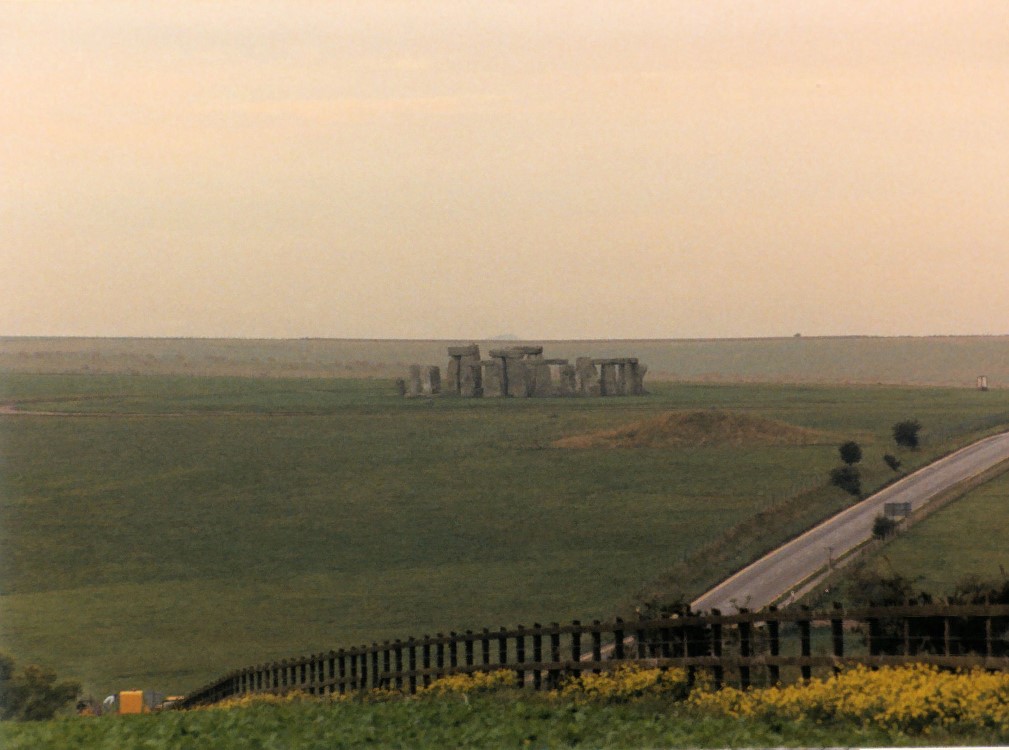
Lighthouses

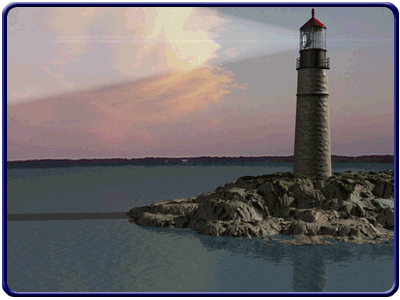
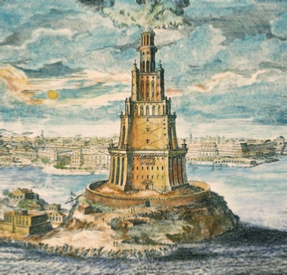 It was constructed during the reign of Ptolemy II between 280 and 247 BC. Considered one of the Seven Wonders of the Ancient World, it was severely damaged in earthquakes in 956 and 1323 AD and was eventually abandoned in ruin. In 1480 the remaining stones were used to build the Citadel of Quaitbay. Today some remains lie on the sea floor of the harbor.
It was constructed during the reign of Ptolemy II between 280 and 247 BC. Considered one of the Seven Wonders of the Ancient World, it was severely damaged in earthquakes in 956 and 1323 AD and was eventually abandoned in ruin. In 1480 the remaining stones were used to build the Citadel of Quaitbay. Today some remains lie on the sea floor of the harbor.
The oldest existing complete lighthouse is the Torre de Hércules (the Tower of Hercules) in A Coruña, Galicia, in northwestern Spain. It was originally known as the Farum Brigantium, the Latin word farum being derived from the Greek word pharos. It was known to have existed in the 1st century, built under the Roman Emperor Trajan.
At the turn of the 18th century, brought on by increased transatlantic commerce, lighthouses transformed from port markers to providing warning of shipping hazards to sailors. With advances in engineering and lighting equipment power and efficiency, lighthouses were able to reach far into the ocean to bring sailors safely home from the sea.
On August 7, 1789, the US Congress approved an Act establishing and securing the protection of all lighthouses under federal support. In 1988, Congress passed a joint resolution designating August 7 as “National Lighthouse Day”.
In the following, I use the terms lighthouse, light station and light interchangeably. While lighthouse refers specifically to the tower containing the lighting mechanism, light station refers to the entire facility including both attached and detached structures. Light generally is the same as light station. However, where the official name (as best as I can determine) is indicated as lighthouse or light, I defer to it.
Like many other travelers, I cannot resist the opportunity to add another lighthouse to my portfolio. And I will travel far from my chosen path to capture a photo. So here is my collection of lighthouses from my travels. For a map of the lighthouse locations click here.
Nova Scotia
Back in the 80s, Amy and I took a trip to Nova Scotia. We spent an evening at a local fiddling contest in Halifax. Nova Scotia is known for the quality of their fiddling talent.
Peggy’s Point Lighthouse (49ft). Located 45 minutes southwest of Halifax, Peggy’s Cove lies at the mouth of St. Margarets Bay. The Cove and lighthouse probably derive their name from St. Margarets Bay, Peggy being a nickname for Margaret. The first lighthouse in Peggy’s Cove was a wooden house with a beacon on the roof built in 1868. The current lighthouse was constructed in 1914.
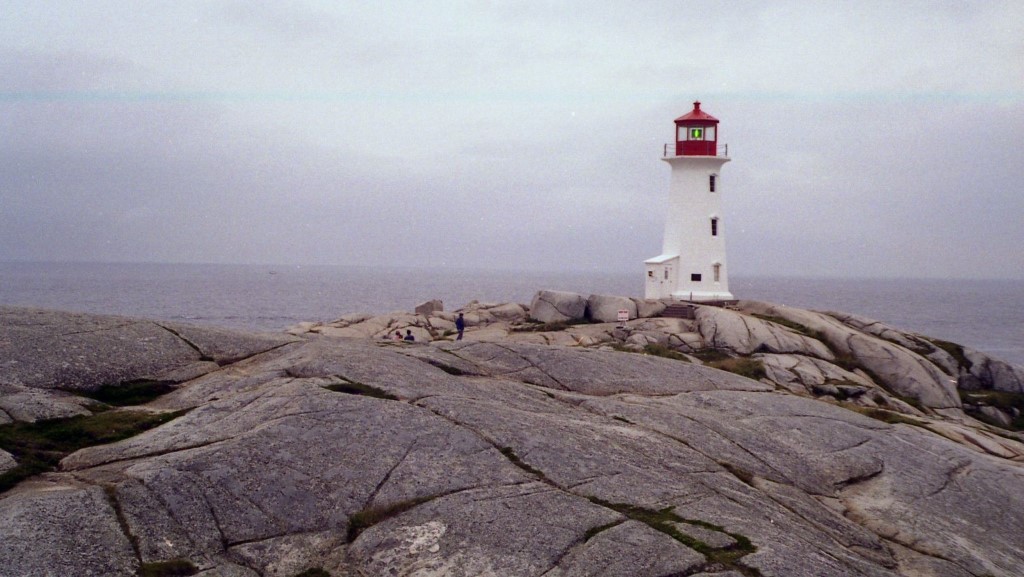
Neil’s Harbour Lighthouse (34ft). Located at the northeast corner of Cape Breton Island, Neil’s Harbour Lighthouse is an enclosed wooden building square in plan, with sloping sides, painted white, surmounted by an octagonal iron lantern painted red. It was constructed in 1899 at the outer edge of the headland for the extravagant sum of $725! In 2015, the lighthouse was declared a heritage lighthouse under the Heritage Lighthouse Protection Act.
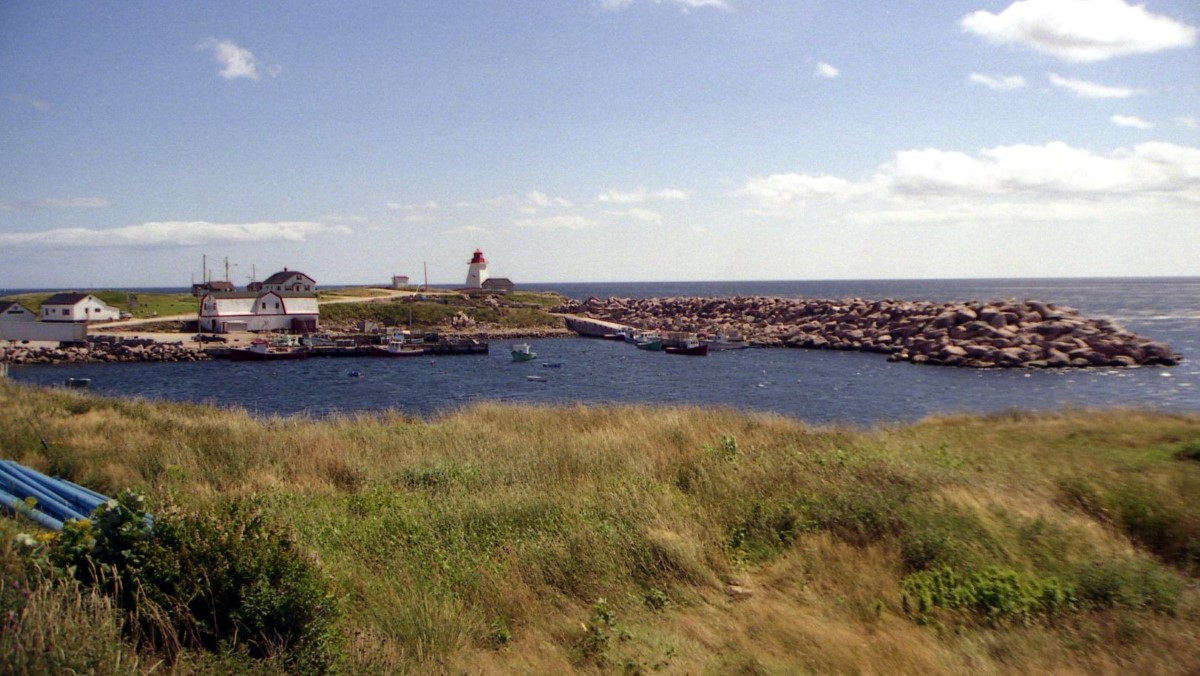
Australia
In 2002 I made a trip to Australia. Actually, I had won this trip at a trade show in 2001. It was a two week trip that spent much of the time in the Outback. However, there just happen to be a number of lighthouses in Sydney Harbour. Fortunately, I was able to capture a couple of them.
Bradleys Head Light (20ft). The Bradleys Head Light is located on a headland protruding from the north shore of Sydney Harbour. Constructed of timber and concrete, it was built in 1905. It sits just below the foremast of the HMAS Sydney, a monument to Australian sailors killed at war.
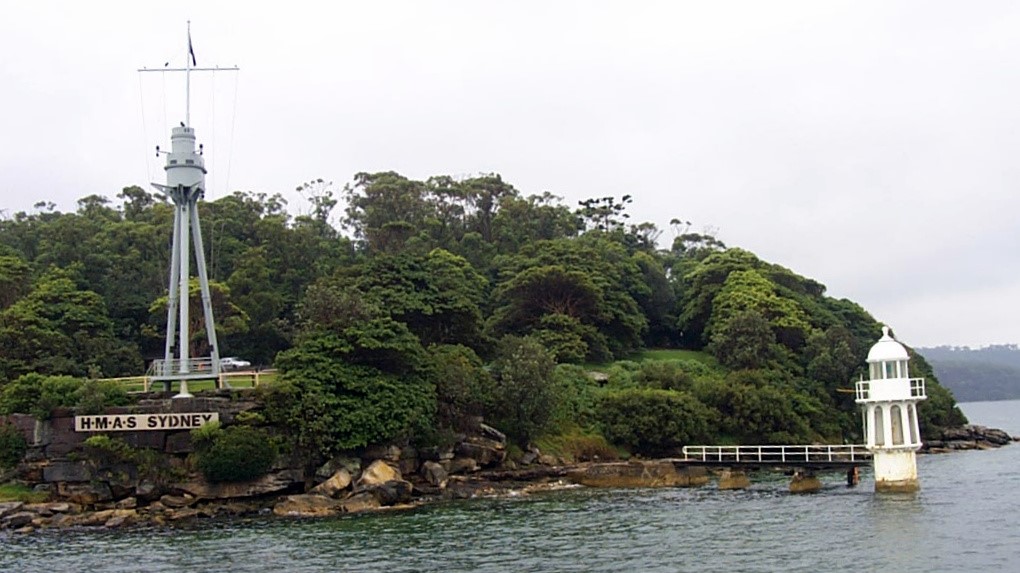
Robertsons Point Lighthouse (26ft). Constructed in 1909, the Robertsons Point Lighthouse is considered to be the sibling of the Bradley’s Head Light.
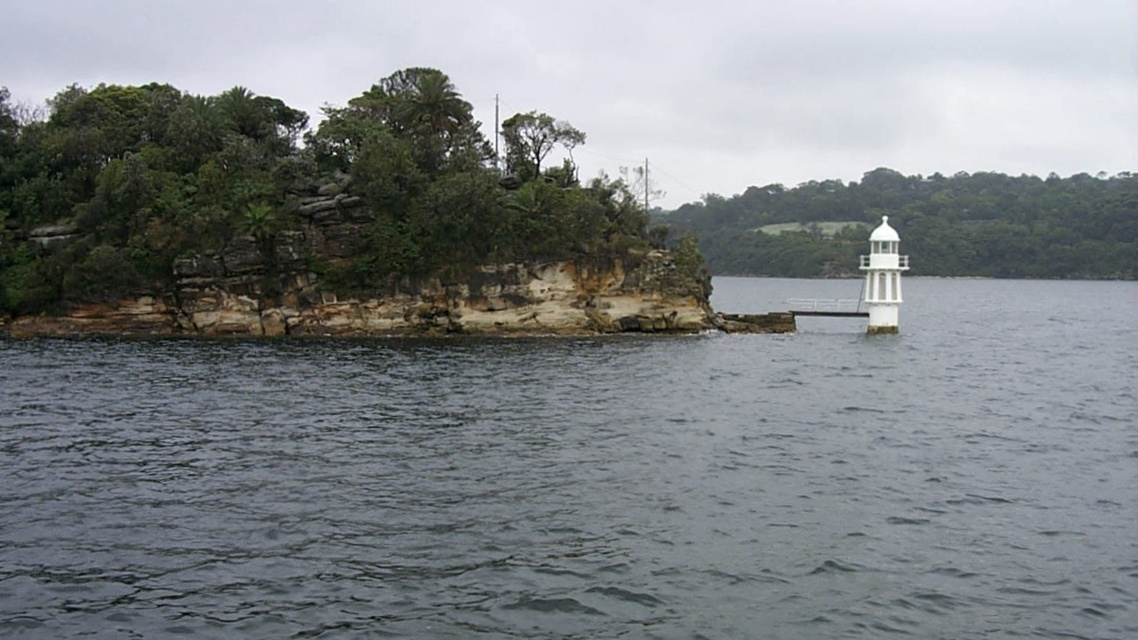
Maine
In 2010, I first traveled to Maine, along with my friend Sharon Campbell, to visit with Jill Cyr and her father Ed Gillander. We are all Beatonites and fellow travelers to Scotland with Alex Beaton. We spent several days exploring in and around Portland before moving on to Loon Mountain, VT, for one of Alex’s gigs. Like Scotland and castles, you can’t hardly swing a dead cat in Maine without hitting a lighthouse. Here are the ones I hit.
Portland Head Light (80ft). Located in Cape Elizabeth, Portland Head Light sits on a head of land at the entrance of the primary channel into Portland Harbor. Constructed in 1791, it not only holds the honor of being the oldest lighthouse in Maine but it is also the most photographed lighthouse in the world!
Ram Island Ledge Light Station (77ft). A series of stone ledges, the Ram Island Ledges lie just off the coast from Portland Head Light. It was the site of repeated shipwrecks and, in 1905, the Ram Island Ledge Light Station was constructed. It is built of granite quarried from Vinalhaven. In 2010, the lighthouse was put up for sale and sold for the highest bid of $190,000 by a surgeon from Windham.
Two Lights Lighthouse (66ft). Constructed in 1828, the Cape Elizabeth Light Station originally had two towers -
Spring Point Ledge Light (54ft). The Spring Point Ledge Light is one of many lighthouses in the Portland Bay. Completed in 1897, it was commissioned after seven steamship companies reported ships running aground on the Spring Point Ledge. It is a caisson-
Portland Breakwater Light (30ft). Built in 1855, the Portland Breakwater Light was first constructed as a wooden structure. When the breakwater was extended, the lighthouse was replaced in 1875. The new light was constructed of six curved cast iron plates. The seam are covered by six Corinthian columns also made of cast iron. The Greek style roof has an edge decoration referred to as palmettes. Because of its small size, it has earned the quaint name of “Bug Light”. It is now part of a small park aptly name Bug Light Park.
In 2016 I again headed north to Maine; this time as the guest of Erin Donovan, fellow Beatonite and traveler. And, of course, we managed to find a few lighthouses.
West Quoddy Head Lighthouse (49ft). Located in Lubec, ME, at 44º 48’ 54” N, 66º 57’ 06” W, the West Quoddy Head Lighthouse is the easternmost point in the contiguous US! And, by a quirk of geography, this is also the closest point in the contiguous US to Africa! (No it is not Florida.) A lighthouse was constructed at this site in 1808 to guide ships through the Quoddy Narrows. It was replaced in 1858 with the current red and white striped tower.
Prospect Harbor Point Light (38ft). The light station at Harbor Point went into operation in 1850. Originally constructed as a rubble-
Mulholland Point Light (60ft). The Mulholland Point Light, located in Welshpool, New Brunswick, Canada, is obviously not in Maine. However, when I took this picture I was in Lubec, ME, having lunch at Frank’s Dockside Restaurant just across the Lubec Narrows from Canada. Located on the Campbello Island, it was commissioned by Parliament in 1882 and the wooded octagonal light was completed in 1884. It was on Campobello in 1921 that Franklin Delano Roosevelt, visiting his island cottage, he fell ill with poliomyelitis which would eventually leave him paralyzed from the waist down.
Ireland & Scotland
The Tarbert Lighthouse (74ft). Lying near the Mouth of the Shannon River in County Kerry, Ireland, is the Tarbert Lighthouse. The 74 foot tower was constructed in 1834 from cut limestone by Robert Howard for the princely sum of £2100. Lying only 500 feet from the Tarbert Power Station, its continual operation is just about guaranteed.
Chalmers Lighthouse (30ft). On my third trip to Scotland with Alex, we made a detour to Anstruther in the East Neuk of Fife for lunch at the Anstruther Fish Bar, at the time considered the best fish and chips in GB. On the western pier, standing above the entrance to the Anstruther Harbour is the Chalmers Lighthouse, also known as the Anstruther West Pier Light. It was built in 1880 as a memorial to Dr Thomas Chalmers who was born in Anstruther and studied at nearby St Andrews University, a mathematician, political economist and leader of the Free Church of Scotland.
Eilean Glas Lighthouse (98ft). Situated on the east coast of the island of Scalpay in the Outer Hebrides of Scotland, Eilian Glas Lighthouse was constructed as a stone tower in 1789. It was replaced with a masonry tower in 1852.
Arnish Point Lighthouse (56ft). Constructed in 1852 at the head of Stornaway Harbour, the Arnish Point Lighthouse was the Northern Lighthouse Board’s first prefabricated tower. At the time its distance from Stornaway on the Isle of Lewis and Harris over the rough, bleak moorland made its access daunting. Its design and construction was awarded to Alan Stevenson, engineer and relative of the novelist Robert Louis Stevenson.
Stroma Lighthouse (75ft). The Pentland Firth is the treacherous stretch of water lying between Scotland and the Orkney Islands. Located on the northern tip of the Isle of Stroma in the Firth, the the Stroma Lighthouse was constructed in 1896 overlooking the Swilkie. The most dangerous whirlpool in the Firth, the Swilkie is caused by the meeting of five contrary tides. Legend has it that from the Swilkie the sea king Mysing, lying 15 fathoms below, grinds all of the salt in the oceans.
Old Kirkwall Harbour Light (20ft). Also known as the Old West Pier Light, it was constructed at the head of the main pier in 1854. In 1994 it was moved too its current location as the head of the inner west pier.
West Coast Road Trip
In October of 2019, along with Allen “Junior” Green, my childhood friend, we cruised the West Coast from Vancouver, British Columbia, Canada, to Goat Canyon, California, within a mile of the southwest corner of the contiguous US. We would have gone further but the signs suggested that we not. However, along the trip, we managed to take in quite a few lighthouses.
Portlock Point Lighthouse (48ft). Leaving Vancouver on the 2nd day of the trip, we boarded a ferry to Vancouver Island. Along the way we passed the Portlock Point Lighthouse, located on Prevost Island. Constructed in 1895, it is a square wooden tower with an attached kitchen.
Cape Flattery Lighthouse (65ft). Sitting on Tatoosh Island at the entrance to the Strait of Juan de Fuca near Neah Bay within the Makah Indian Reservation in Washington State, the Cape Flattery Lighthouse lies just off of the most northwest point in the contiguous US. Completed in 1857, the conical tower is constructed of sandstone and brick. The photo was taken by Junior who trekked the 0.75 mile trail to Cape Flattery to photograph the lighthouse which sits 4700’ off shore.
Cape Meares Lighthouse (38ft). Built in 1890, the octagonal Cape Meares Lighthouse lies just south of Tillamook Bay in Oregon. In 2010, vandals, driving along a maintenance road, fired a number of rounds into the structures. Among the $500,000 damage was the historic Fresnel lens that was manufactured in Paris in 1888 and shipped around Tierra del Fuego. Under a $6000 reward, two men were eventually apprehended who admitted to the act while drunk. They paid $100,000 in reparations and three 16-
Heceta Head Lighthouse (56ft). North of Florence, OR, the Heceta Head Lighthouse sit on a promontory high above the Pacific. Lit in 1894, conical brick and stucco structure guides sailors 21 nautical miles out to sea.
Umpqua River Lighthouse (61ft). Located at the mouth of the Umpqua River on Winchester Bay, OR, the Umpqua River Lighthouse was first lit in 1894. It replaced the original light that, due to its proximity to the river, collapsed in 1863. It took Congress 25 years of procrastination to finally authorize the replacement.
Coquille River Light (40ft). Located near Bandon, OR, the Coquille River Light is a brick and stucco conical tower originally lit in 1896.
Point Cabrillo Light (47ft). Converted to a museum, the Point Cabrillo Light is located just north of Mendocino, CA. Constructed of wood and concrete in the American Craftsman style, it was opened in 1909.
Point Arena Lighthouse (115ft). Lying on a narrow peninsula sticking 0.5 miles into the Pacific, the Point Arena Lighthouse, Point Arena, CA, at 115 feet in height it is heralded as the “tallest lighthouse on the Pacific Coast”. However, the Pigeon Point Light at 115 feet at Pescadero, CA, also claims the title. Perhaps the confusion lies in the origins of the Point Arena Light. Originally constructed in 1870, the station rose only 100 feet. The devastating San Francisco 1906 earthquake damaged the facility to the point that it was demolished and replaced with the current tower in 1908.
Alcatraz Island Lighthouse (84ft). The original lighthouse, located in San Francisco Bay and built in 1854, was the first lighthouse on the West Coast. At the time, the island included a citadel, Fort Alcatraz, and a military prison. Like the Point Arena Light, it was damaged in the 1906 earthquake. It was raised and, in 1909, the current lighthouse was erected.
Pigeon Point Light Station (115ft). Vying for the tallest lighthouse on the west coast, Pigeon Point Light Station, Pescadero, CA, was first lit in 1872, preempting the Point Arena Light by 36 years.
Point Pinos Lighthouse (43ft). The lighthouse at Pacific Grove, CA, was first lit on Feb 1, 1855. It is the oldest continuously operating lighthouse on the West Coast. It was predated by the Alcatraz Island Lighthouse by eight months. However, the Alcatraz Light was replaced in 1909 leaving Point Pinos with the honor. It is surrounded by the Pacific Grove Municipal Links golf course.
Point Sur Lighthouse (48ft). Sitting 270 feet above the Pacific on the north side of Point Sur, the lighthouse is the only complete early 20th century (1889) light station open to the public. It was originally inspired by the increased shipping traffic as a result of the 1849 gold rush.
Piedras Blancas Light Station (70ft). Located at Point Piedras Blancas, near San Simeon, CA, the Piedras Blancas Light Station was first lit in 1875. Originally 100 feet tall, it was damaged by repeated earthquakes over the years. After damage from an earthquake in 1948, the upper three floors of the tower were removed. The original light and first-
Point Loma Lighthouse (46ft). Located on Point Loma at the mouth of the San Diego Bay, the lighthouse was first lit in 1855. It is an example of a Cape Cod style lighthouse.
Scotland
In 2022, I, along with my sister, Cissy, and brother, John, made a trip to Scotland in search of our Stuart ancestors. Much of our investigation was in the southwest portion of the country.
Turnberry Point Lighthouse (79ft). Alongside of Turnberry Castle is the Turnberry Point Lighthouse. Completed in 1873, the lighthouse overlooks the Irish Sea.
Portpatrick Lighthouse (46ft) sits at the the entrance to the harbor of Portpatrick, Scotland, along the west coast of the Rhinns of Galloway. Lit in 1774, the light was discontinued in 1900 at the lighting of Killantringan Lighthouse.
Lighthouses have been around for thousands of years. They evolved from harbor beacons welcoming sailors home from the sea to indispensable beacons for the safe navigation by sailing ships. With the advent of GPS their usefulness has diminished. I’m sure that at some point, they will become nothing more than museums and oddities dotting our coastline. For me they will remain places of great interest representing our desire to travel farther and farther from home.